140 have author last names that start with B have author last names that start with B
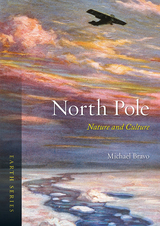
The Victorian conceit of the polar regions as a vast empty wilderness—a bastion of adventurous white males battling against the elements—is far from the only polar vision. Bravo paints a variety of alternative pictures: of a habitable Arctic crisscrossed by densely connected networks of Inuit trade and travel routes, a world rich in indigenous cultural meanings; of a sacred paradise or lost Eden among both Western and Eastern cultures, a vision that curiously (and conveniently) dovetailed with the imperial aspirations of Europe and the United States; and as the setting for tales not only of conquest and redemption, but also of failure and catastrophe. And as we face warming temperatures, melting ice, and rising seas, Bravo argues, only an understanding of the North Pole’s deeper history, of our conception of it as both a sacred and living place, can help humanity face its twenty-first-century predicament.
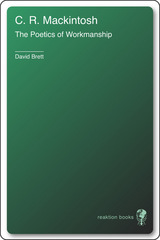
After focusing on the various decorative details and interior spaces of Mackintosh's buildings the author reaches to the heart of Mackintosh's poetic system – the suffused eroticism of the sleek, "feminine" and intensely private "white interiors". A notable feature of this persuasive reappraisal of Mackintosh's work is the wealth of photographs by the author showing rarely featured details of buildings, interiors and furnishings.
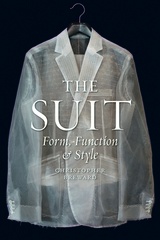
The Suit unpicks the story of this most familiar garment, from its emergence in western Europe at the end of the seventeenth century to today. Suit-wearing figures such as the Savile Row gentleman and the Wall Street businessman have long embodied ideas of tradition, masculinity, power, and respectability, but the suit has also been used to disrupt concepts of gender and conformity. Adopted and subverted by women, artists, musicians, and social revolutionaries through the decades—from dandies and Sapeurs to the Zoot Suit and Le Smoking—the suit is also a device for challenging the status quo. For all those interested in the history of menswear, this beautifully illustrated book offers new perspectives on this most mundane, and poetic, product of modern culture.
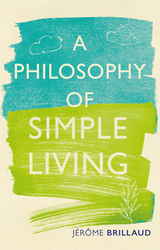
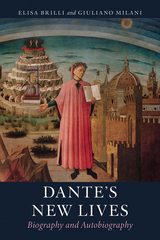
Numerous books have attempted to chronicle the life of Dante Alighieri, yet essential questions remain unanswered. How did a self-taught Florentine become the celebrated author of the Divine Comedy? Was his exile from Florence so extraordinary? How did Dante make himself the main protagonist in his works, in a literary context that advised against it? And why has his life interested so many readers? In Dante’s New Lives, eminent scholars Elisa Brilli and Giuliano Milani answer these questions and many more. Their account reappraises Dante’s life and work by assessing archival and literary evidence and examining the most recent scholarship. The book is a model of interdisciplinary biography, as fascinating as it is rigorous.
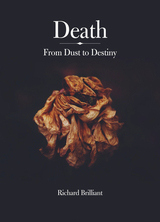
Brilliant examines the ways that an individual’s ethos can live on long after the biological body perishes. It does so through the collective memories of survivors, being passed down to subsequent generations. Such “remainings” are created by rituals and reinforced through commemorations and obituaries and projected through art and architecture. These powerful inducements to remember counter the finality of physical death, bridging the gap between absence and presence. Weaving together a rich collection of texts and images and guiding them with deeply meaningful insights, Brilliant offers a reflective meditation on the methods that artists, architects, and writers have developed to activate memory and animate their subjects into robust afterlife. In this way, he shows, death need no longer be seen as a terminal departure but rather a transformation into a new form of existence, one carried on by the communion of others.
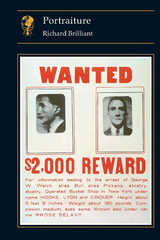
The author's argument on behalf of portraiture (and he draws on examples by such artists as Botticelli, Rembrandt, Matisse, Warhol and Hockney) does not comprise a mere survey of the genre, nor is it a straightforward history of its reception. Instead, Brilliant presents a thematic and cogent analysis of the connections between the subject-matter of portraits and the beholder's response – the response he or she makes to the image itself and to the person it represents. Portraiture's extraordinary longevity and resilience as a genre is a testament to the power of this imaginative transaction between the subject, the artist and the beholder.
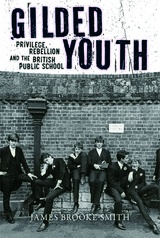
Drawing on personal experience, extensive research, and public school representations in poetry, school slang, spy films, popular novels, and rock music, Brooke-Smith offers a fresh account of upper-class adolescence in Britain and the role of elite private education in shaping youth culture. He shows how this central British institution has inspired a counterculture of artists, intellectuals, and radicals—from Percy Shelley and George Orwell to Peter Gabriel and Richard Branson—who have rebelled against both the schools themselves and the wider society for which they stand. Written with verve and humor in the tradition of Owen Jones’s The Establishment: And How They Get Away With It, this highly original cultural history is an eye-opening leap over the hallowed iron gates of privilege—and perturbation.
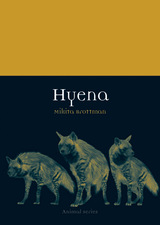
Hyenas are almost universally regarded as nasty, scheming charlatans that skulk in the back alleyways of the animal kingdom. They have been scorned for centuries as little more than scavenging carrion-eaters, vandals, and thieves. Here to restore the Hyena’s reputation is Mikita Brottman, who offers an alternate view of these mistreated and misunderstood creatures and proves that they are complex, intelligent, and highly sociable animals.
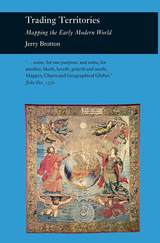
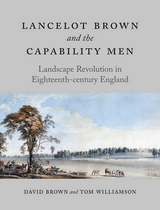
David Brown and Tom Williamson argue that Brown was one of the most successful designers of his time working in a style that was otherwise widespread—and that it was his skill with this style, and not his having invented it, that linked his name to it. The authors look closely at Brown’s design business and the products he offered clients, showing that his design packages helped define the era’s aesthetic. They compare Brown’s business to those of similar designers such as the Adam brothers, Thomas Chippendale, and Josiah Wedgwood, and they contextualize Brown’s work within the wider contexts of domestic planning and the rise of neoclassicism. Beautifully illustrated throughout, this book celebrates the work of a master designer who was both a product and harbinger of the modern world.
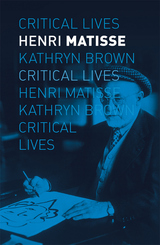
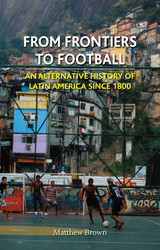
Telling the story of Latin America’s engagement with global empires from 1800 to today, From Frontiers to Football is as much a narrative of repeated cycles, continued dependency, and thwarted dreams as it is a tale of imperial designs overthrown, colonial armies defeated, and other successes that have inspired colonized peoples across the globe. Brown restores a cultural history to the continent, giving as much attention to pop singer Shakira and retired footballer Pelé as he does to coffee producers, copper miners, government policies, and covert imperialism. Latin America, Brown shows, is no longer a frontier or periphery, but rather is at the forefront of innovation and a global center for social, cultural, and economic activities. Clear and readable, From Frontiers to Football presents a compelling introduction to the history of Latin America’s interactions with the world over the last two centuries.
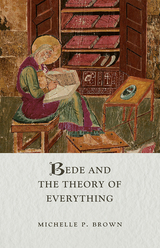
A 2023 History Today Book of the Year
This book investigates the life and world of Bede (c. 673–735), the foremost scholar of the early Middle Ages and the “father of English history.” It examines his notable feats, including calculating the first tide tables, creating the Ceolfrith Bibles and the Lindisfarne Gospels, writing the earliest extant Old English poetry, and composing his famous Ecclesiastical History of the English People. In addition to providing an accessible overview of Bede’s life and work, Michelle P. Brown describes new discoveries regarding Bede’s handwriting, his historical research, and his previously lost Old English translation of St John’s Gospel, dictated on his deathbed.
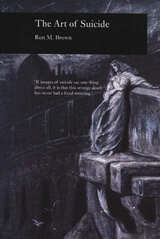
Brown tracks the changes surrounding the perception of suicide into the pivotal Romantic era, with its notions of the "man of feeling", ready to hurl himself into the abyss over a woman or an unfinishable poem. After the First World War, the meaning of death and attitudes towards suicide changed radically, and in time this led to its decriminalization. The 20th century in fact witnessed a growing ambivalence towards suicidal acts, which today are widely regarded either as expressions of a death-wish or as cries for help. Brown concludes with Warhol's picture of Marilyn Monroe and the videos taken by the notorious Dr Kevorkian.
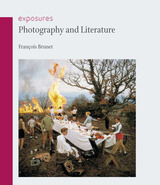
Aspiring writers are often admonished to “show, not tell,” an instruction that immediately speaks to the relationship between the written word and the visual world. It is a tenuous correspondence—both literature and art are striving toward the same goal of depiction, but the reality they portray is shaped by their chosen tools. As François Brunet argues in Photography and Literature, the advent of photography posed one of the greatest challenges to writers—here was an artistic medium that could almost instantly distill a scene or perspective. As Brunet shows, the result of this challenge has been a fantastic interplay between the two and between photographers and writers themselves.
Photography and Literature assess the complete history of photography, and Brunet begins by examining how the invention of photography was shaped by written culture, both scientific and literary. As well, Brunet looks at the creation of the photo-book, the frequent personal discovery of photography by writers, and how photography and literature eventually began to trade tools and merge formats to create a new photo-textual genre. Highly illustrated, Photography and Literature reflects a photographer’s point of view, giving new attention to such works as the groundbreaking exploration of photography in The Pencil of Nature by William Henry Fox Talbot and Sophie Calle’s projects with Jean Baudrillard and Paul Auster.
Essential for anyone interested in the intersection of the verbal and the visual, Photography and Literature provides a fascinating wealth of autobiography, manifesto, and fiction as well as a variety of images from the first daguerreotypes to the digital age.
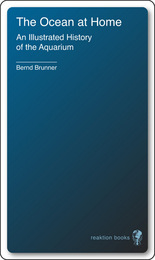
The mysterious world beneath the ocean’s surface and its inhabitants have captivated humanity for centuries—the Egyptians, Greeks, Romans, and ancient Chinese all kept fish in their homes to observe and admire. But it was not until the nineteenth-century invention of the aquarium that the deep was truly domesticated, offering the curious a chance to create an indoor exotic sea world, in miniature.
In The Ocean at Home, Bernd Brunner traces the development of the aquarium from the Victorian era to the present day. Along the way, in this fascinating history, Brunner provides insight into the cultural and social circumstances that accompanied the aquarium’s swift rise in popularity. Brunner tells a compelling story of obsession, discovery, and delight—from the aquarium’s origin as a tool for scientific observation to the Victorian era’s elaborately decorated containers of curiosity, to the great public aquariums that are popular in cities around the world today.
Featuring more than 100 illustrations, this updated edition of The Ocean at Home offers a colorful and captivating look at how a Victorian obsession still enchants many today. Both the owner of a humble goldfish bowl and the dazzled spectator at major public aquariums will find The Ocean at Home an appealing and knowledgable guide to the aquatic worlds we create.
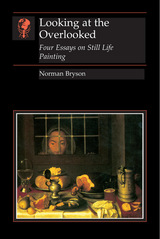
In Looking at the Overlooked, Norman Bryson is at his most brilliant. These superbly written essays will stimulate us to look at the entire tradition of still life with new and critical eyes.
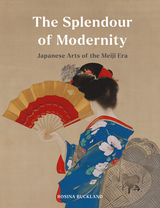
The Splendour of Modernity presents a comprehensive overview of Japanese art from 1865 to 1915, including painting, calligraphy, sculpture, prints, ceramics, lacquerware, textiles, basketry, metalwork, and cloisonné. It challenges misconceptions that foreign influence diluted the supposed authenticity of Japanese art during this era. Instead, Rosina Buckland highlights the development of distinctively Japanese artistic practices in response to new stimuli from overseas. The book also dispels assumptions of artistic decline in the early Meiji era by examining the period from 1865 to 1885. Meticulously researched and beautifully illustrated, this captivating book showcases the resilience, innovation, and enduring beauty of Japanese art during a transformative period marked by Japan’s global engagement and artistic evolution.

British culture is marked by indelible icons—red double-decker buses, large oak wardrobes, and the compact sleekness of the Mini. But British industrial and product design have long lived in the shadows of architecture and fashion. Cheryl Buckley here delves into the history of British design culture, and in doing so uniquely tracks the evolution of the British national identity.
Designing Modern Britain demonstrates how interior design, ceramics, textiles, and furniture craft of the twentieth century contain numerous hallmark examples of British design. The book explores topics connected to the British design aesthetic, including the spread of international modernism, the eco-conscious designs of the 1980s and 1990s, and the influence of celebrity product designers and their labels. Buckley also investigates popular nostalgia in recent times, considering how museum and gallery exhibitions have been instrumental in reimagining Britain’s past and how the heritage industry has fueled a growing trend among designers of employing images of British culture in their work.
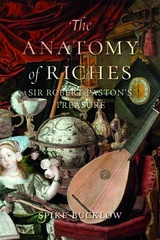
Beginning with the travels of Sir Robert’s father Sir William, the Paston wealth brought luxuries from across the globe to an idyllic retreat in rural Norfolk. There, the family commissioned Europe’s finest craftsmen to enhance their exotic rarities, a trove of objects that included everything from musical instruments to bejeweled ostrich eggs and nautilus shell goblets. The lavish hospitality of the Paston family was renowned throughout England, but the English Civil War and plague tore the country apart, and peace-loving Sir Robert was assailed by what he called a “whirlpool of misadventures.” As the dawn of the modern era saw the beginning of the family’s loss of fortune, Sir Robert kept faith and worked tirelessly to protect his wife and children. Encouraged by his friend Dr. Thomas Browne, he even found time to pursue his own idiosyncratic interests, employing both an alchemist in search of the Philosophers’ Stone and an artist to capture his favorite treasures in an enigmatic still life, The Paston Treasure. Exploring the Paston family’s history through their collection and this famed painting, The Anatomy of Riches offers a history of both early modern England and the modern world’s birth-pangs.
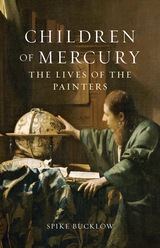
Children of Mercury is a bold new account of the lives of premodern painters, viewed through the lens of “the seven ages of man,” a widespread belief made famous in the “All the world’s a stage” speech in Shakespeare’s As You Like It. Spike Bucklow follows artists’ lives from infancy through childhood, adolescence, and adulthood, to maturity, old age, and death. He tracks how lives unfolded for both male and female painters, from the famous, like Michelangelo, through Artemisia Gentileschi and Mary Beale, to those who are now forgotten, like Jehan Gillemer. The book draws on historic biographies, the artists’ writings, and, uniquely, the physical evidence offered by their paintings.
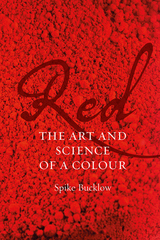
Bucklow takes us from a thirty-four-thousand-year-old shaman burial dress to the iPhone screen, exploring the myriad of purposes we have put red to as well as the materials from which we have looked to harvest it. And we have looked for it everywhere, from insects to tree resin to tar to excitable gasses. Bucklow also details how our pursuit of the color drove medieval alchemy and modern chemistry alike, and he shows us red’s many symbolic uses, its association with earth, blood, and fire, its coloring of caves and the throne rooms of goddesses, as well as national flags, fire trucks, power grids, and stoplights.
The result is a material and cultural history that makes one see this color afresh, beating with vibrancy, a crucial part of the human visual world.
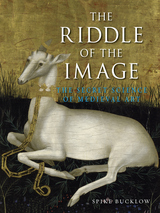
Examining the science of the tools and resources, as well as the techniques of medieval artists, Bucklow adds new layers to our understanding and appreciation of paintings in particular and medieval art more generally. He uses case studies—including The Wilton Diptych, one of the most popular paintings in the National Gallery in London and the altarpiece in front of which English monarchs were crowned for centuries—and analyses of these works, presenting previously unpublished technical details that shed new light on the mysteries of medieval artists. The first account to examine this subject in depth for a general audience, The Riddle of the Image is a beautifully illustrated look at the production of medieval paintings.
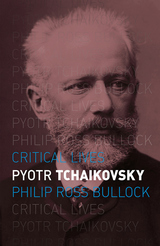
Setting aside clichés of Tchaikovsky as a tortured homosexual and naively confessional artist, Philip Ross Bullock paints a new and vivid portrait of the composer that weaves together insights into his music with a sensitive account of his inner emotional life. He looks at Tchaikovsky’s appeal to wealthy and influential patrons such as Nadezhda von Meck and Tsar Alexander III, and he examines Russia’s growing hunger at the time for serious classical music. Following Tchaikovsky through his celebrity up until his 1891 performance at New York’s Carnegie Hall and his honorary doctorate at the University of Cambridge, Bullock offers an accessible but deeply informed window onto Tchaikovsky’s life and works.
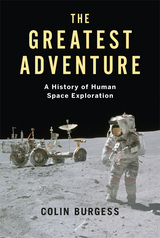
The space race was perhaps the greatest technological contest of the twentieth century. It was a thrilling era of innovation, discovery, and exploration, as astronauts and cosmonauts were launched on space missions of increasing length, complexity, and danger. The Greatest Adventure traces the events of this extraordinary period, describing the initial string of Soviet achievements: the first satellite in orbit; the first animal, man, and woman in space; the first spacewalk; as well as the ultimate US victory in the race to land on the moon. The book then takes the reader on a journey through the following decades of space exploration to the present time, detailing the many successes, tragedies, risks, and rewards of space exploration.
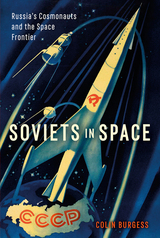
In this deeply researched chronology, Colin Burgess describes the then Soviet Union’s extraordinary success in the pioneering years of space exploration. Within a decade, the Soviets not only launched the world’s first satellite, Sputnik, in 1957, but they also were the first to send an animal and a human being into Earth orbit. In the years that followed, their groundbreaking missions sent a woman into space, launched a three-man spacecraft, and included the first person to walk in space. Six decades on from the historic spaceflight of cosmonaut Yuri Gagarin, Burgess guides us through the amazing achievements of Russia’s spaceflight program through to the present day, introducing the men and women who have flown the missions that drive us to delve ever deeper into the wonders and complexities of the cosmos.
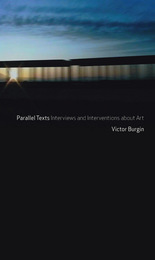
Artist and critic Victor Burgin’s visual and written works span four decades, and Parallel Texts presents a compilation of essays, interviews, and extracts that evidence the interconnectedness throughout his career of his vast artistic oeuvre exhibited around the world and his influential critical and theoretical writings on art.
Organized chronologically, Parallel Texts includes Burgin’s take on the emergence of conceptual art in the early 1970s, his explorations on the theoretical foundations for a post-conceptualist socialist art practice in such non-Western precedents as Maoism and Russian Formalism, and essays on the issues of gender politics and sexuality as they came to the fore in psychoanalytic criticism. In addition, excerpts from The End of Art Theory record his observations on an art world turning toward fashion and gaining unusual wealth. His later works, influenced by his experiences teaching cultural theory at the University of California, look at art theory from within an environment almost unrecognizably transformed by cultural, political, and economic globalization, as well as unprecedented forms of technology and violence.
An extensive selection of works from a long and influential artistic career, Parallel Texts will be invaluable to admirers of Burgin’s art and writing as well as those readers with an interest in contemporary art and art theory.
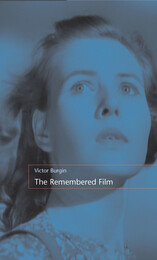
Victor Burgin examines a kaleidoscope of film fragments drawn from a variety of media, the internet, memory and fantasy. Among these are sequences of such brevity they might almost be stills. Such "sequence-images", as Burgin calls them, are neither strictly "image" nor "image sequence" and have not been considered before by either film or photography theory. He also considers some typical individual experiences "sampled" from mainstream cinema. He reflects on such disparate occurrences as the association in memory of fragments from otherwise unrelated films, of the relation of a recollected film image to an architectural setting, or of a feeling "marked" by an image remembered from a film.
The Remembered Film provides a radical new way of thinking about film outside conventional cinema, and in relation to our everyday lives. It will appeal to a wide audience interested in film and media.
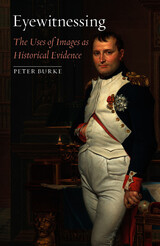
Traditional art historians have depended on two types of analysis when dealing with visual imagery: iconography and iconology. Burke describes and evaluates these approaches, concluding that they are insufficient. Focusing instead on the medium as message and on the social contexts and uses of images, he discusses both religious images and political ones, also looking at images in advertising and as commodities.
Ultimately, Burke's purpose is to show how iconographic and post-iconographic methods – psychoanalysis, semiotics, viewer response, deconstruction – are both useful and problematic to contemporary historians.
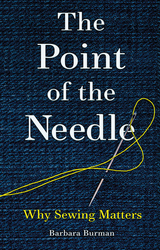
Tens of millions of people sew for necessity or pleasure every day, yet the craft is surprisingly under-appreciated. The Point of the Needle redresses the balance: this is a book that argues for sewing’s place in our lives. It celebrates not only sewing’s recent resurgence but sewists’ creativity, well-being, and community. Barbara Burman chronicles new voices of people who sew today, by hand or machine, to explore what they sew, what motivates them, what they value, and why they mend things, revealing insights into sewing’s more intimate stories. In our age of superfast fashion with its environmental and social injustices, this eloquent book makes a passionate case for identity, diversity, resilience, and memory—what people create for themselves as they stitch and make.

In Animals in Film, Jonathan Burt points out that the mobility of animals presented technical and conceptual challenges to early film-makers, the solutions of which were an important factor in advancing photographic technology, accelerating the speed of both film and camera. The early filming of animals also marked one of the most significant and far-reaching changes in the history of animal representation, and has largely determined the way animals have been visualized in the twentieth century.
Burt looks at the extraordinary relation-ship between animals, cinema and photography (including the pioneering work of Eadweard Muybridge and Jules-Etienne Marey) and the technological developments and challenges posed by the animal as a specific kind of moving object. Animals in Film is a shrewd account of the politics of animals in cinema, of how movies and video have developed as weapons for animal rights activists, and of the roles that animals have played in film, from the avant-garde to Hollywood.
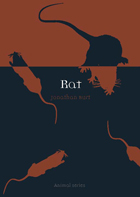
Central to Rat is the history of the relationship between humans and rats and, in particular, the complex human attitudes toward these shrewd creatures. Burt examines why the rat is viewed as more loathsome and verminous than other parasitic animals and considers why humans have had diametrically opposed attitudes about the rat: some cultures greatly admire the rat for its skills, while others consider the rat the scourge of the earth. Burt also draws on a wide range of examples to explore the rat's role in science, culture, and art, from its appearances in children's literature such as The Wind in the Willows to Victorian rat- and dog-baiting pits to its symbolic roles in folklore.
Rat offers an intriguing and richly illustrated study of one of nature's most remarkable creatures and ultimately finds that the rat exists as a perverse totem for the worst excesses of human behavior.
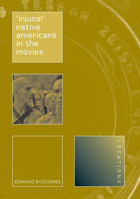
Buscombe opens with a historical survey of American Westerns and their controversial portrayals of Native Americans: the wild redmen of nineteenth-century Wild West shows, the more sympathetic depictions of Native Americans in early Westerns, and the shift in the American film industry in the 1920s to hostile characterizations of Indians. Questioning the implicit assumptions of prevailing critiques, Buscombe looks abroad to reveal a distinctly different portrait of Native Americans. He focuses on the lesser known Westerns made in Germany—such as East Germany’s Indianerfilme, in which Native Americans were Third World freedom fighters battling against Yankee imperialists—as well as the films based on the novels of nineteenth-century German writer Karl May. These alternative portrayals of Native Americans offer a vastly different view of their cultural position in American society.
Buscombe offers nothing less than a wholly original and readable account of the cultural images of Native Americans through history andaround the globe, revealing new and complex issues in our understanding of how oppressed peoples have been represented in mass culture.
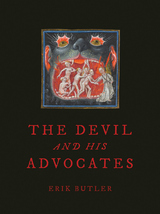
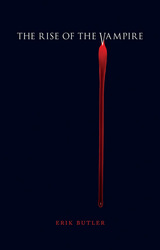
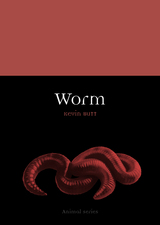
This book celebrates the mysterious world of worms from gardens to toothaches and beyond. Kevin Butt introduces all manner of worms, including many that bear only superficial resemblance to our limbless, sinuous friends in the dirt. To trace the intimate history between worms and people, he discusses worms that live in bodies, soil, and water as well as worms from literature and mythology. Throughout the ages, worms have been portrayed as benign, even beautiful, yet at other times spitefully ostracized as deadly creatures. This richly illustrated book looks at the microscopic and the very large indeed, asking what the future holds for both human- and worm-kind.
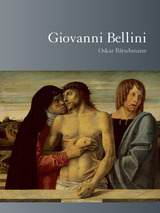
The artist struggled to break out of the long shadow cast by his accomplished father Jacopo and father-in-law Andrea Mantegna, and Bätschmann chronicles Bellini’s development of distinct aesthetic and painting techniques that enabled him to set himself apart. Bellini also insisted on choosing his own subjects and themes, independent of the preferences of his patron Isabella d’Este, and thus set new standards for the role of the artist.
Anchoring the analysis are a wealth of vibrant color reproductions that include such famous works as The Feast of the Gods and Madonna and Child, as well as photographs of Bellini’s lauded altar-pieces at the churches of San Giobbe, Murano, and San Zaccania. Drawing on these masterpieces, Bätschmann argues that Bellini’s artistry and skillful blending of colors created a new aesthetic more akin to music than to previous approaches to painting. And by leading viewers to understand this subtle, refined sensibility, Bellini transformed them into knowledgeable admirers of art.
A lushly illustrated and expansive study, Giovanni Bellini is essential for all historians and admirers of Renaissance art.
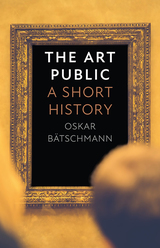
The Art Public explores the history of efforts to imagine a collective, general audience for art in the world. Oskar Bätschmann explores both written and pictorial evidence of the development of the “art public” as an idea and disentangles connections between art production, audiences, and actual reception. Two aspects shape the narrative: the transformation of the audience from passive recipient to active agent as well as satirical jabs at audiences by the likes of Cruikshank, Rowlandson, and Daumier. This sweeping account connects the ancient Greeks with Renaissance painters, modern writers, and contemporary movie stars in a deft survey of the ways we imagine art’s immediate impact on audiences and its afterlives in museums, galleries, and the world.
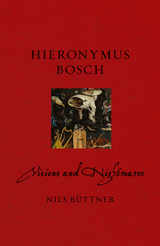
In his lifetime the early Netherlandish painter Hieronymus Bosch was famous for his phantasmagoric images, and today his name is synonymous with the infernal. The creator of expansive tableaus of fantastic and hellish scenes—where any devil not dancing is too busy eating human souls—he has been as equally misunderstood by history as his paintings have. In this book, Nils Büttner draws on a wealth of historical documents—not to mention Bosch’s paintings—to offer a fresh and insightful look at one of history’s most peculiar artists on the five-hundredth anniversary of his death.
Bosch’s paintings have elicited a number of responses over the centuries. Some have tried to explain them as alchemical symbolism, others as coded messages of a secret cult, and still others have tried to psychoanalyze them. Some have placed Bosch among the Adamites, others among the Cathars, and others among the Brethren of the Free Spirit, seeing in his paintings an occult life of free love, strange rituals, mysterious drugs, and witchcraft. As Büttner shows, Bosch was—if anything—a hardworking painter, commissioned by aristocrats and courtesans, as all painters of his time were. Analyzing his life and paintings against the backdrop of contemporary Dutch culture and society, Büttner offers one of the clearest biographical sketches to date alongside beautiful reproductions of some of Bosch’s most important work. The result is a smart but accessible introduction to a unique artist whose work transcends genre.
READERS
Browse our collection.
PUBLISHERS
See BiblioVault's publisher services.
STUDENT SERVICES
Files for college accessibility offices.
UChicago Accessibility Resources
home | accessibility | search | about | contact us
BiblioVault ® 2001 - 2024
The University of Chicago Press









